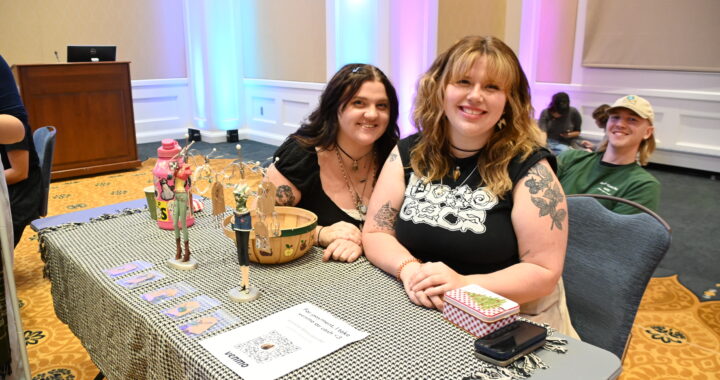Plaid: a wardrobe staple from the 1500s to the 2000s
4 min read
Adriana Acuna | The Blue & Gray Press
By KELLY EMMRICH
Whether you love plaid, or find it to be only something a hipster lumberjack would wear, it is a print that has dominated both the runways and campus walk for many years, and has had quite a historical impact. This is why it is impossible to walk to class without seeing at least half a dozen students sporting plaid flannel button-ups along campus walk today.
Everyone in the fashion industry, from avant garde designer Alexander McQueen to more affordable designers like Adam Lippes, who has created collections for Target, loves to recreate plaid, especially because of its Scottish heritage and rebellious historical connotation.
Interestingly, although we know this print as ‘plaid,’ it actually is known as Tartan print. A Tartan, by early Scottish definitions, was either a Celtic knit or blanket that was used as an outer layer to battle the harsh Highland weather. Tartans also distinguished different Scottish clans from each other in the 1500s, as each clan had a designated design. Later, British and American manufactures created the modern plaid fabric that was supposed to resemble the Tartan.
In 1538, King James V bought several yards of the material for his wife, and of course, courtiers followed suit, making it the pattern of highly esteemed royals.That is, until 1745, when the print was banned for its role in the Scottish rebellion of 1745 against the union of Scotland and England.
Though, after being banned for nearly half a century, plaid resurfaced in the form of formal ball gowns in high society England in 1782, because just as we cannot resist plaid neither could the royals. During the 1800s, plaid made its way from Europe to America where it became the foundation of every person’s’ fall wardrobe.
Woolrich Woolen Mills, for example, a company based in the midwest, created the classic buffalo plaid. Their red and black crosshatched pattern is closely associated with the clothes of outdoorsmen and lumberjacks. Many people may recognize the pattern from the packaging of Brawny paper towels, as the man on the label has sported it for years.
In 1924, another clothing manufacturer, Pendleton, also created a plaid shirt for men, which quickly became an instant staple for casual wear. To this day, Pendleton is still creating plaid garments for all seasons and in 1949 they created the first female version.
Plaid was not just for royals anymore. During a particularly harsh winter in 1936, a lumber town in Michigan began producing their own version of the popular red flannel shirts, which became an instant winter staple for the men in the town.
Neither was it just for lumberjacks, as Dennis Wilson, David Marks, Carl Wilson, Mike Love and Brian Wilson, the men behind the The Beach Boys, popularized the classic Pendleton flannel shirts during the late 20th century.
On their 1963 album, “Surfer Girl,” the band posed with a surfboard, khakis and identical blue and purple flannel shirts. Plaid even began to influence interior design in the 1970s with the inception of plaid blankets, curtains, couches pillows and even wallpaper.
However, even though the print began with heavy ties to scotsman, cowboys, lumberjacks and the New World, it took on a new tone when Daisy from “The Dukes of Hazard” knotted her shirt above her waist with barely-there shorts. Now plaid was sexy.
Around the same time in England, the print was taking on more a rebellious nature as shredded plaid shirts created an anarchic spin on the monarchy’s favorite print.
British fashion designer Vivienne Westwood soon became an iconic figure in the rebellious plaid movement. In particular, her fall/winter collection in 1993 became an iconic runway show that showcased the re-invented avant garde spin on the classic tartan print.Supermodels such as Linda Evangelista, Christy Turlington, Naomi Campbell and Kate Moss walked the runway in eccentric plaid ensembles.
The 1980 and 1990s were two pivotal decades for the feisty pattern. In cult classic movies such as “The Heathers” and “Clueless,” plaid was styled in a preppy, something high schoolers soon began to emulate. For example, Cher in “Clueless” wore a bright yellow plaid blazer and mini skirt combo with white knee-socks, and soon, girls were sporting the exact same outfit. Plaid is not just the pattern of rebels, but also of prepsters.
Today, plaid can be worn in numerous ways. Think blanket scarves and ponchos, in addition to the classic sweaters or button-ups. Whether you are a hipster, outdoorsman, a prep or just a student trying to stay warm on a chilly October nights plaid is a great way to stay warm and be instantly fashionable.


